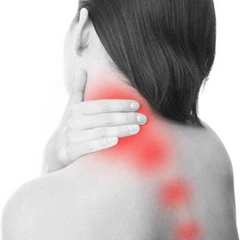Introduction
Portable shockwave therapy machines are transforming the field of physiotherapy and rehabilitation. As a non-invasive treatment, shockwave therapy (ESWT) effectively relieves chronic pain, accelerates muscle recovery, and treats musculoskeletal disorders. Traditionally, this type of treatment was often confined to hospitals or clinics due to the large size and complexity of the equipment. However, with the rise of portable shockwave therapy devices for home care and mobile clinics, healthcare providers can now deliver professional ESWT treatment anywhere, improving access, flexibility, and patient outcomes. This article will explore the advantages, applications, and selection considerations for portable shockwave therapy devices in these scenarios.

Key Technologies and Advantages of Portable Shockwave Therapy Devices

Technical Principles
Shockwave therapy devices generate high-energy sound waves that penetrate soft tissue and stimulate natural repair processes. It is non-invasive physiotherapy. Their mechanical effects break down calcification deposits, while their biological effects promote cell activity, collagen production, and blood circulation. Portable devices are smaller and lighter than traditional fixed devices, making them ideal for use in mobile and home care settings.
Advantages of Portable Shockwave Therapy Machines
Portable shockwave therapy machines retain the core therapeutic effects of traditional shockwave therapy-non-invasive, rapid pain relief, and tissue repair-while overcoming the limitations of traditional large devices in terms of space, mobility, and usage through a lightweight and easy-to-operate design.
• Flexible mobility: Portable devices are typically small and lightweight, requiring no fixed treatment room. They can be easily moved to different clinic rooms, sports venues, or patients' homes, breaking geographical limitations.
• Controllable costs: Compared to large devices, portable devices have lower procurement costs and do not require dedicated placement space, saving on space costs. They can also be flexibly configured, avoiding idle equipment.
• Expanded service reach: Suitable for various areas such as home services, sports settings, and community clinics.
• Convenient access to medical care: Patients can receive effective treatment without having to travel to large medical institutions, reducing time costs and travel inconvenience.
• Easy operation: No complex installation, debugging, or professional technicians are required. Medical staff can operate the system independently after simple training. The interface is intuitive, and core parameters can be quickly adjusted.
Precautions for Safe Use
While portable shockwave therapy devices offer flexibility and convenience, they remain professional physical therapy equipment and require careful use. The proper use of portable ESWT devices ensures safety and treatment effectiveness.
• Operating procedures: The ease of use of portable devices does not mean they can be used indiscriminately. They must be operated by qualified medical personnel with physical therapy certifications.
• Proper conductive medium: Always use medical-grade ultrasound gel-never replace it with water or oil.
• Energy setting control: Avoid using excessive energy on sensitive areas. Adjust intensity based on diagnosis.
• Clinical limitations: The energy intensity of portable devices is only suitable for everyday musculoskeletal pain and strain repair. For other serious conditions, please consult a doctor. Do not neglect treatment limitations due to portability and delay proper care.
Applications in Mobile Clinics
Portable shockwave therapy devices are widely used in mobile clinics primarily because they overcome location limitations and are well-suited to the characteristics of highly mobile and dispersed service scenarios, including:
• Community-based home rehabilitation: Targeting elderly people with limited mobility and post-operative patients at home, reducing the burden of travel and ensuring continuity of rehabilitation.
• Immediate diagnosis and treatment in sports settings: Providing immediate pain relief and repair for acute sports injuries in gyms and at sporting events, preventing further injury aggravation.
• Supplementing primary healthcare: Providing support to remote areas, filling the gap in the treatment of musculoskeletal pain and chronic strain injuries without requiring patients to travel long distances.

Applications in Home Care
The core needs of home care are safety and convenience. Portable shockwave therapy devices bring professional treatment into the home, primarily for:
• Long-term rehabilitation: For those with mobility issues, such as stroke sequelae or severe arthritis patients, regular home visits by medical staff or assistance from family members can alleviate chronic pain and improve joint function.
• Chronic pain management: Assisting patients with chronic tendinitis and cervical and lumbar spine strain to receive periodic home treatment according to their doctor's plan, controlling pain recurrence.
• Post-surgery recovery: Supporting patients after fracture or ligament repair surgery, providing targeted adhesion release and aiding tissue repair, shortening the rehabilitation period and reducing follow-up visits.
• Self-care under guidance: FDA/CE certified portable shockwave therapy devices can be operated independently by individuals with long-term rehabilitation needs after professional assessment, balancing convenience and compliance.

How to Choose the Right Portable Shockwave Therapy Machine
The following are the core parameters and key points to consider when selecting a portable shockwave device.
Size and Weight
Prioritize devices weighing 5-15kg with a compact size, featuring an integrated handle or a dedicated storage case for easy portability to mobile clinics, car storage, or home storage.
Shockwave Type and Penetration Depth
Choose a device with both radial shockwave (RSWT) and focused shockwave (FSWT) modes to meet diverse treatment needs. Single-mode devices should be selected based on the core application scenario to avoid limited therapeutic efficacy.
Frequency and Energy Range
The frequency range should cover 1-21Hz, with adjustable energy levels to suit different patient tolerances and disease types.
User Interface and Preset Programs
An intuitive touchscreen interface with one-button start and preset treatment programs is preferred for quick recall of subsequent treatments for the same patient, meeting the needs of home self-care and efficient treatment in small clinics.
Safety Certifications
Ensure the device has FDA, CE, and ISO 13485 quality management system certifications. Avoid purchasing products without international certifications. Newangie's physical therapy devices are FDA-approved and CE certified, ensuring they meet global standards for home and clinical use.
Warranty and After-Sales Service
We prioritize experienced brand suppliers, as they often offer more comprehensive after-sales service and technical support. Newangie has 17 years of manufacturing experience and provides expert guidance at every stage of marketing, training, and after-sales service to help you use your portable shockwave device effectively.
Conclusion
Portable shockwave therapy devices offer portability, convenience, and highly effective treatment in mobile clinics and home care. If you are interested, please contact us for procurement. Newangie is a manufacturer you can trust, providing you with high-quality shockwave therapy machines and comprehensive support and service.











